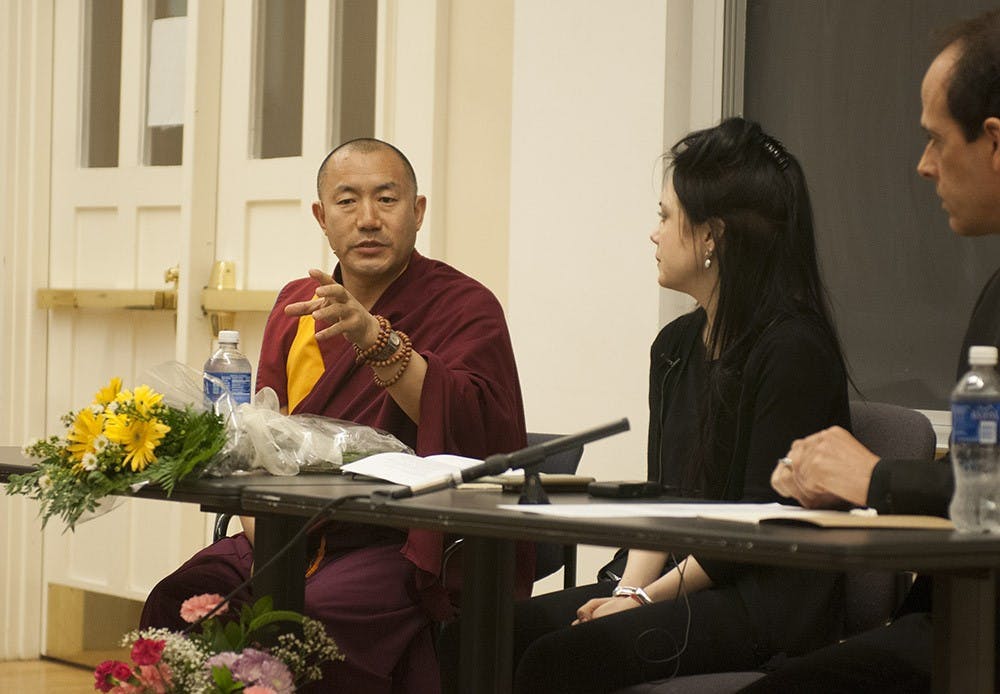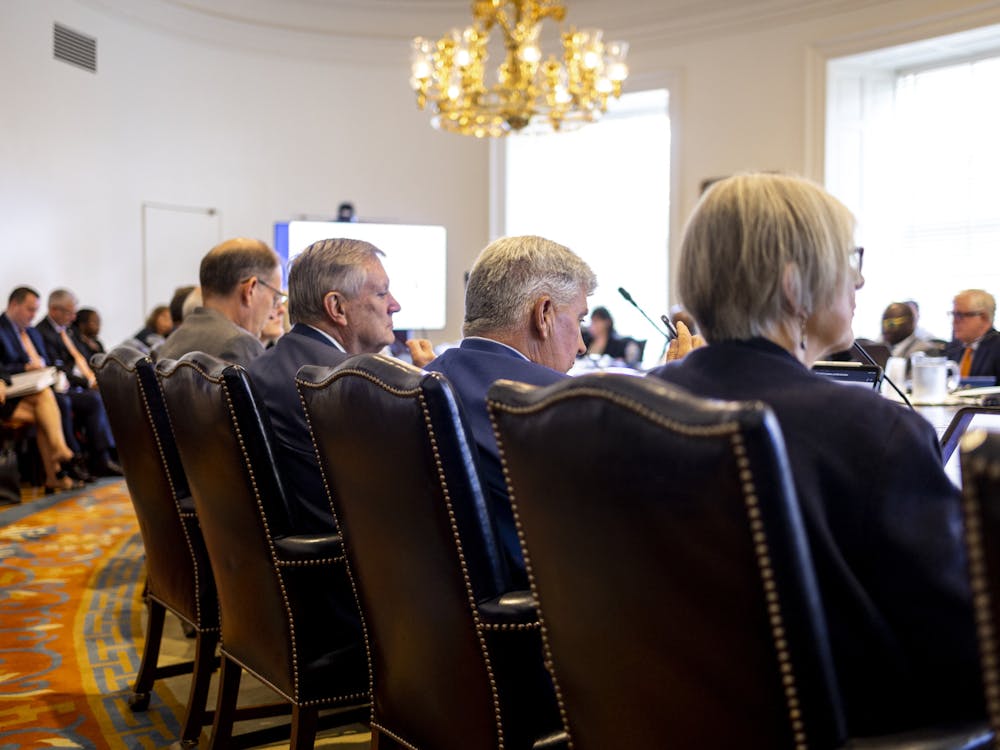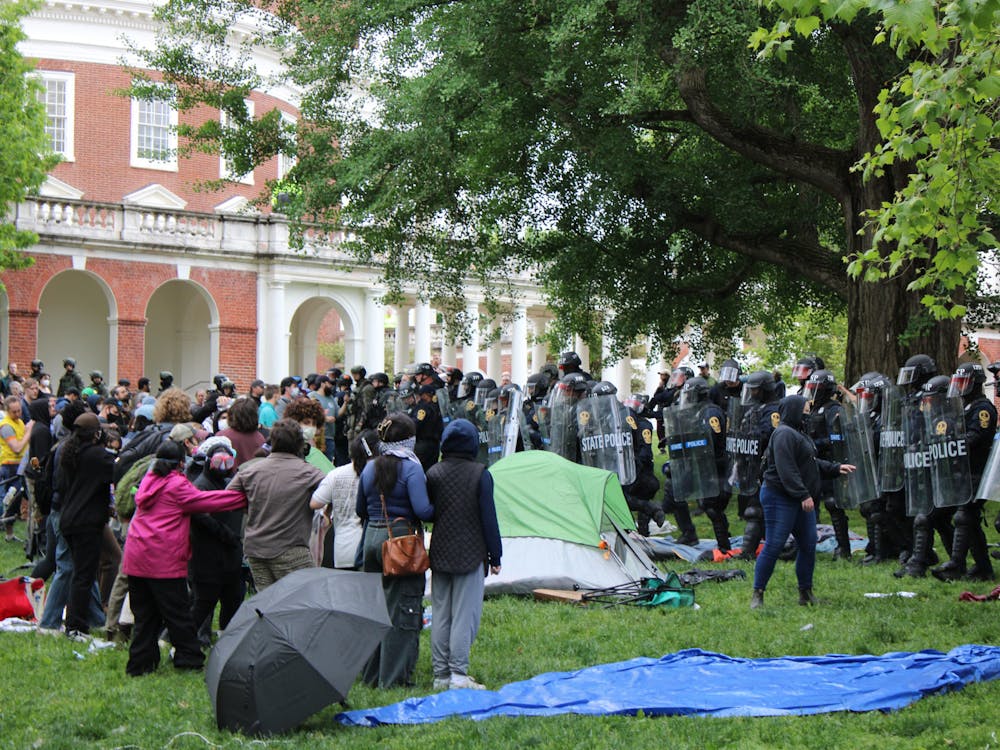Madeline Nagy, Senior Writer
David Germano, director of the Contemplative Sciences Center and professor of religious studies, hosted a dialogue Monday with Khenpo Tsultrim Lodrö as part of the CSC Speaker Series. Lodrö, an avid promoter of Tibetan culture and accomplished teacher, is currently overseeing monastic education at the Larung Five Sciences Buddhist Institute in Serthar, Tibet.
Germano said he hoped students would get a visceral sense of the Tibetan Buddhist world to begin to see complex connections between Tibetan and American society and the struggle to understand those connections.
“I think one of the challenges of being at a University in the middle of Virginia is that we study about all senses of things around the world,” Germano said. “[There is] great value to bringing people in who represent a very different point of view who aren’t packaging themselves in ways we can immediately understand.”
After a brief introduction by Germano, Khenpo and his translator opened the discussion by describing the educational landscape of Tibet. Khenpo said while institutions considered academically traditional by Western standards exist in Tibet, monasteries are where people educate their mind and morals.
“This notion of being a good person entails not doing harm to others and doing acts of benefit to others,” Khenpo said. “The education that monasteries deliver primarily revolves around this [concept].”
Within his own monastery, Khenpo said he estimates 70 percent of the students follow the 15-year academic program, while 30 percent instead pursue a seven-year meditational practice. The process of deciding which program to undertake largely revolves around the age of the student, he said, with those under 25 typically choosing the academic path, and those over 40 practicing meditation.
Khenpo described in-depth the elaborate seven years of meditative practice, with special emphasis on the meditation practices of the second year. These practices involve the student’s envisioning of his or her elders and calling upon them for blessings and wisdom, which Khenpo said is important.
“[Visualizing past generations of Lamas] connects us like a pipe from the reservoir of the Buddhist wisdom,” Khenpo said. “Our own Lama that we have the fortune of encountering in this lifetime is like the faucet to this wisdom. [However], if we don’t have the pipe to transport water from the reservoir… the water won’t be able to reach us.”
Nevertheless, Khenpo said there are many similarities underlying between Tibetan and Western monasteries and universities. Khenpo also described many ways in which the two methods of teaching and researching can contribute to greater understandings and knowledge.
“By combining a research approach that looks at both the physical [and] material and one that looks at the psychology and more intangible components of the mind, we can develop a really healthy direction for our research,” Khenpo said.





